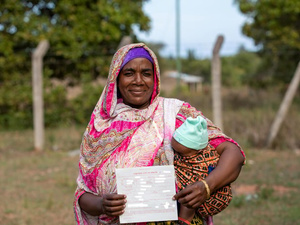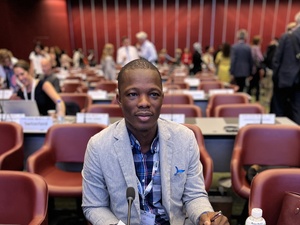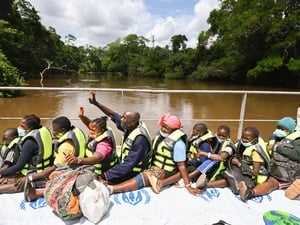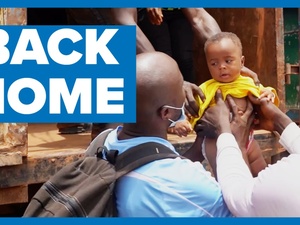Refugee camps threatened by fighting in Liberia
Refugee camps threatened by fighting in Liberia
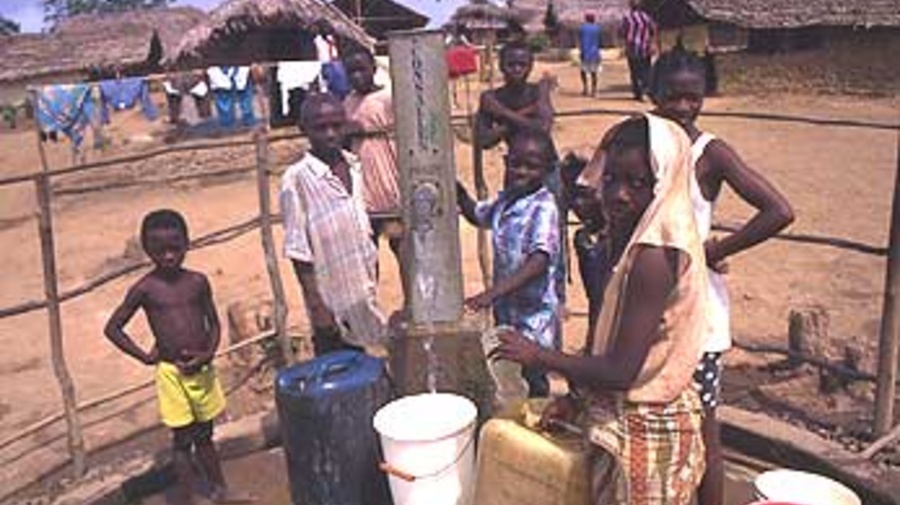
UNHCR has been unable to reach Liberia's Sinje camp due to road blocks caused by recent fighting.
MONROVIA, Liberia, May 27 (UNHCR) - The UN refugee agency has said it is extremely concerned about the security of thousands of Sierra Leonean refugees hosted in camps situated near battle lines as fighting intensified in Liberia last week.
Refugees in the Sinje camps, near the border with Sierra Leone, are said to be very anxious about the deteriorating situation. Last week's fighting in Gbah and Medina, halfway between Sinje and Monrovia, effectively cut off the main road from the camps to the capital.
In addition to their usual refugee population of 11,000, Sinje I and II camps are now hosting about 8,000 internally displaced Liberians, plus an unknown number of local residents frightened by the fighting. The camps have reportedly received frequent visits from agitated government fighters and irregular militia, allegedly visiting family members or searching for dissidents.
The situation is somewhat similar in Zuannah camp, north-west of Monrovia, which is hosting 3,000 refugees from Sierra Leone and where some 5,000 displaced Liberians have arrived in recent weeks. The camp is situated on a small forest track that has been used by residents fleeing fighting in Gbah, Medina, Tubmanburg and Kle Junction, a well-known landmark 35 km north of Monrovia. Although Zuannah, like other camps in Montserrado county, is still accessible by road, the delivery of assistance to refugees has slowed down considerably due to the large numbers of displaced Liberians among them.
Security is also tight around Samukai, another refugee camp north-east of Monrovia with 5,000 refugees. The camp is situated on a strategic road between Monrovia and Gbarnga which the government suspects could be used by dissidents attempting to enter the capital. Heavily-armed security forces conduct frequent patrols in the area and numerous checkpoints have been set up around Monrovia.
As a result of the fighting, UNHCR has been unable to access Sinje camps for more than two weeks now, and has only been able to establish regular radio contact with refugee leaders there. However, fuel for the generator is running out quickly and no delivery is as yet possible.
The Liberian government on Monday announced it had reclaimed Gbah and Medina, which were reportedly briefly under rebel control before the weekend. Commercial transport is said to be running today along the main road leading to Monrovia.
Refugee leaders from Sinje I and II are using this opportunity to travel to the capital today and meet with UNHCR officials to discuss the situation. In view of the deteriorating situation, they were advised last week to watch developments and make a decision to move on towards Sierra Leone should fighting near the camps endanger the lives of the refugees.
The inaccessibility of the road leading from Monrovia to Sinje and further on to Sierra Leone also means that land repatriations to Sierra Leone, which were suspended during the elections in that country but could have now resumed, are impossible for now.
UNHCR is making plans to hire a ship from Guinea to transport refugees by sea from Monrovia to Freetown in Sierra Leone. The ship, which can transport less than 200 people a week, will be used as a temporary measure, pending the reopening of the Monrovia/Sierra Leone road.
Field officers are today travelling to all camps, except Sinje, in Montserrado county to resume official registration for repatriation. Although only 400 refugees remained on the list for repatriation after the last convoy departed at the end of April, it is expected that more candidates will register today due to the ongoing tension.


